Key Takeaways
Fiberglass statues represent a transformative shift in contemporary design, merging practicality with artistic vision. Their lightweight composition—up to 70% lighter than traditional concrete—simplifies installation and repositioning, while maintaining structural integrity in diverse climates. Unlike conventional materials, fiberglass resists corrosion, cracking, and UV degradation, ensuring decades of aesthetic preservation.
| Feature | Concrete | Fiberglass |
|---|---|---|
| Weight (per cubic ft) | 12-18 lbs | 3-5 lbs |
| Weather Resistance | Moderate | High |
| Lifespan | 10-25 years | 30+ years |
| Customization Options | Limited | Extensive |
The fusion of concrete textures with fiberglass cores addresses historical limitations of purely mineral-based sculptures, offering nuanced detailing without compromising portability. This hybrid approach enables designers to replicate classical motifs for modern settings—from minimalist indoor galleries to weather-exposed garden installations.
Environmentally, fiberglass production at Ronglin Garden incorporates 40% recycled content, aligning with circular design principles. The material’s non-porous surface prevents microbial growth, reducing chemical cleaning needs by 60% compared to porous stone alternatives. Such attributes position these statues as sustainable focal points in LEED-certified landscapes.
Versatility extends beyond physical durability. Designers leverage fiberglass’s molding flexibility to create scalable artworks—from tabletop figurines to life-sized installations—without proportional weight increases. This adaptability supports cohesive thematic storytelling across mixed-use spaces, harmonizing indoor transitional zones with outdoor hardscapes.
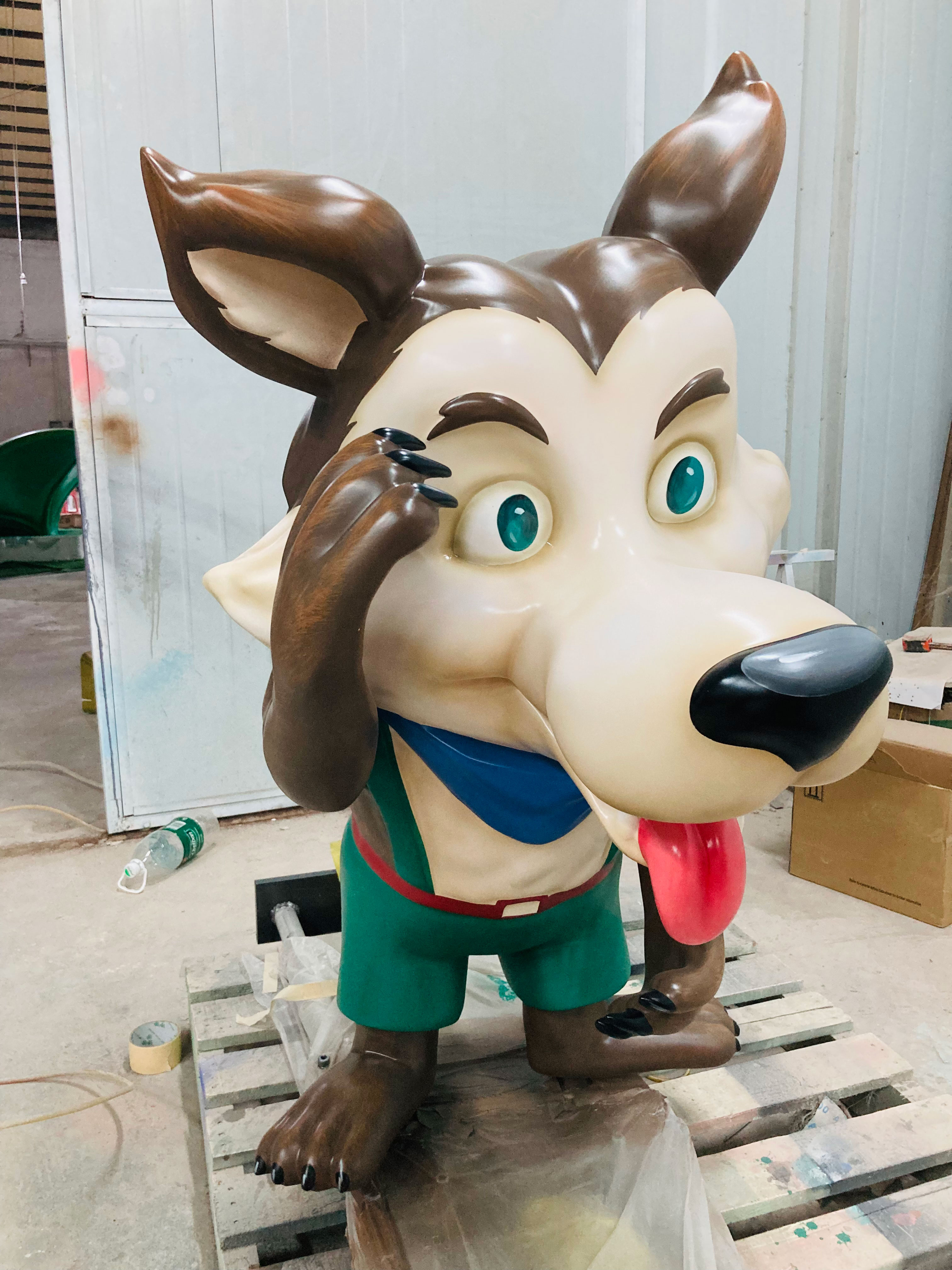
Fiberglass Statues Redefine Modern Space Design
Fiberglass statues are revolutionizing contemporary design by merging structural innovation with aesthetic flexibility. Unlike traditional materials like stone or bronze, fiberglass sculpture offers unparalleled adaptability, enabling intricate details and bold forms without compromising durability. This material’s resistance to weathering, UV rays, and corrosion ensures that designs retain their vibrancy in both gardens and urban plazas for decades.
Design Tip: Pair minimalist fiberglass statues with natural greenery to create focal points that harmonize with organic landscapes.
The lightweight nature of fiberglass simplifies installation and repositioning, empowering designers to experiment with dynamic layouts. Modern spaces increasingly prioritize fluidity, and these statues effortlessly adapt to shifting trends—whether anchoring a rooftop terrace or accentuating a sleek indoor atrium. Ronglin Garden’s integration of fiberglass with reinforced concrete exemplifies this duality, blending industrial strength with refined artistry. As sustainability becomes central to design, fiberglass statues further stand out for their eco-friendly production processes and recyclability, aligning with global efforts to reduce material waste. By reimagining spatial narratives through resilient, lightweight forms, fiberglass statuary bridges the gap between functional durability and creative expression.
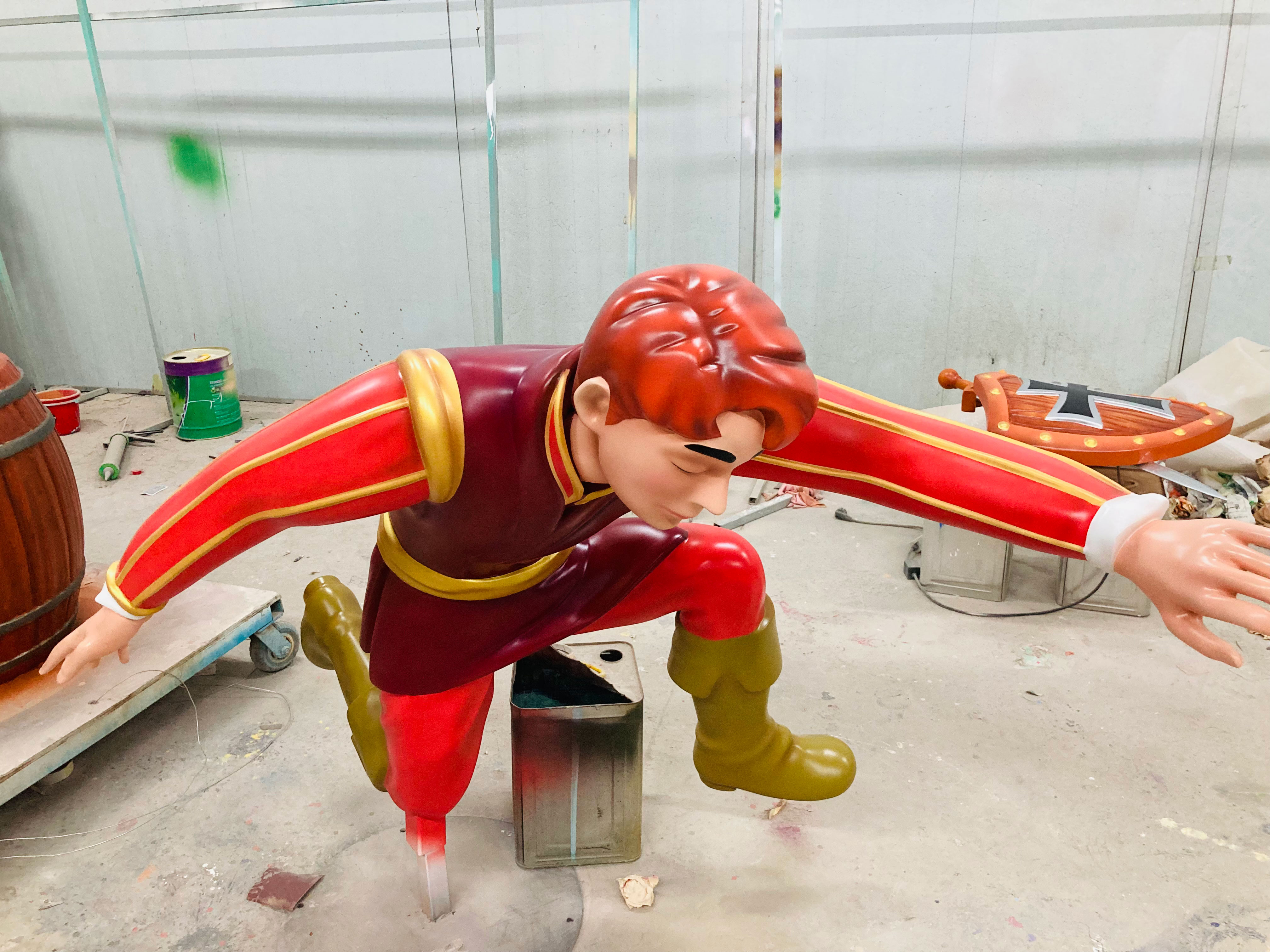
Concrete-Fiberglass Fusion for Lasting Elegance
The marriage of concrete and fiberglass represents a breakthrough in sculptural design, merging raw industrial strength with refined artistic vision. By embedding fiberglass reinforcement within concrete matrices, Ronglin Garden’s statues achieve structural integrity without sacrificing intricate detailing—a critical balance for both indoor galleries and weather-exposed gardens. Unlike traditional concrete, which risks cracking under stress, the fiberglass core redistributes weight evenly, enabling slender forms like flowing drapery or delicate botanical motifs. This hybrid approach also addresses environmental concerns: fiberglass reduces material waste during production, while concrete’s thermal mass helps regulate microclimates in outdoor installations.
For designers seeking adaptable elegance, this fusion unlocks possibilities—from minimalist IP character sculpture installations to large-scale architectural accents. The textured concrete surface absorbs light softly, creating depth, while fiberglass ensures decades of resilience against UV rays and moisture. As urban landscapes prioritize sustainability, this material synergy offers a blueprint for durable artistry that evolves with shifting design trends.
Lightweight Durability Meets Artistic Expression
Fiberglass statues bridge the gap between structural resilience and creative freedom, offering designers unparalleled flexibility in shaping modern spaces. Unlike traditional materials like stone or bronze, which often limit artistic possibilities due to their weight and rigidity, fiberglass’s lightweight nature enables intricate detailing without compromising strength. This balance allows artists to craft lifelike textures, flowing forms, and dynamic poses that withstand environmental stressors—from harsh weather to accidental impacts. For instance, Ronglin Garden’s concrete-fiberglass hybrids replicate the weathered charm of aged stone while maintaining a fraction of the weight, simplifying installation in elevated gardens or indoor atriums.
The material’s adaptability also supports innovative finishes, such as faux patinas or metallic coatings, creating visual depth that rivals Stainless steel sculpture in sophistication. Moreover, fiberglass’s moldability ensures consistency in reproducing complex designs, making it ideal for thematic installations requiring multiple identical pieces. By harmonizing practical durability with expressive potential, these statues empower designers to transform both intimate courtyards and expansive public plazas into cohesive artistic narratives.
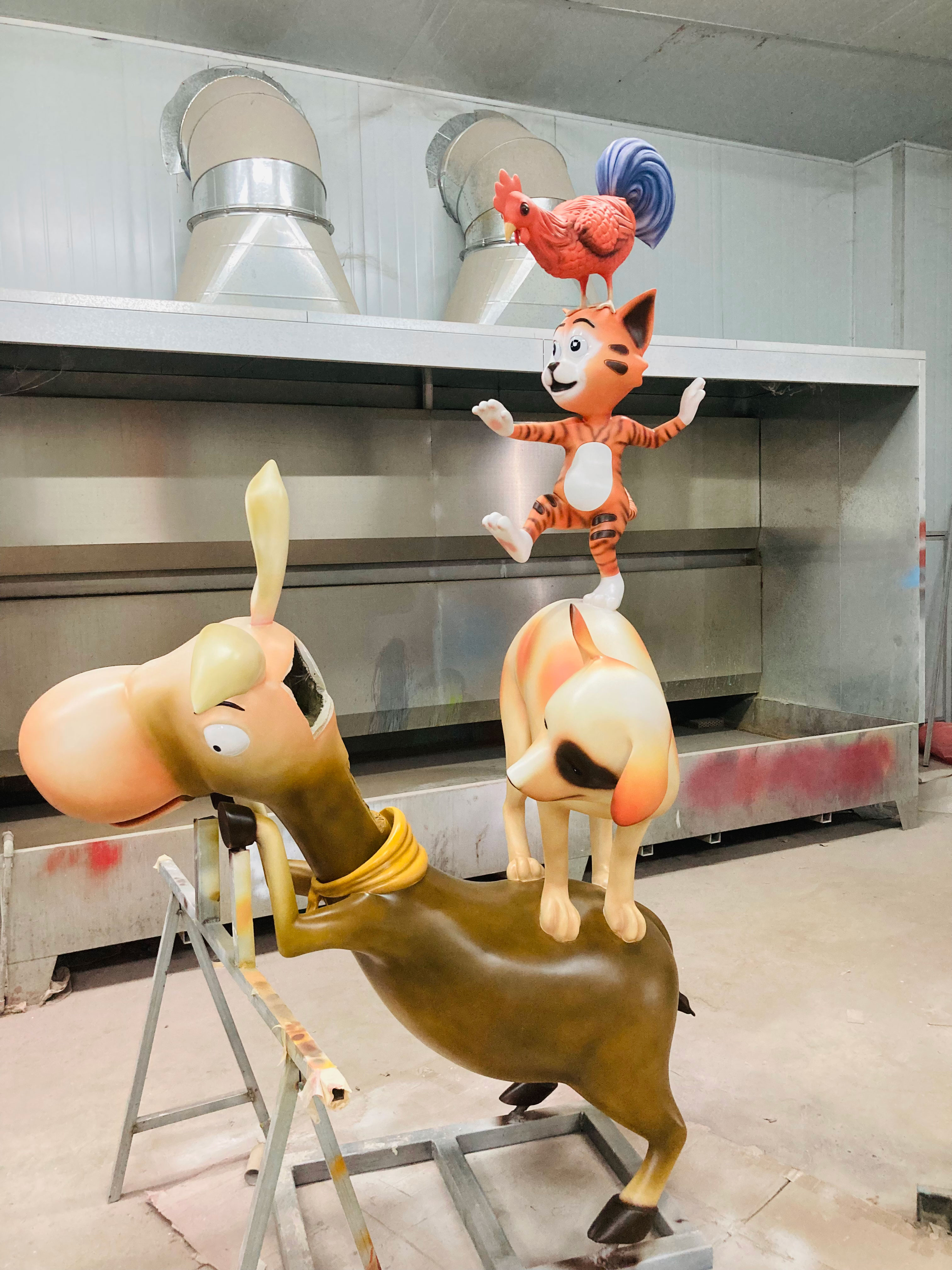
Eco-Conscious Outdoor Sculptures That Endure
Fiberglass statues are redefining sustainability in outdoor decor by merging environmental responsibility with structural resilience. Unlike traditional stone or metal sculptures, fiberglass requires fewer raw materials and generates less waste during production. This lightweight material also reduces transportation emissions, making it a practical choice for eco-conscious designers. Its durability ensures that installations withstand harsh weather, UV exposure, and temperature fluctuations, minimizing the need for replacements.
Ronglin Garden’s innovative use of fiberglass-concrete composites further enhances this sustainability. The material’s non-porous surface resists mold and corrosion, preserving aesthetic integrity for decades without chemical treatments. For example, their Cartoon sculpture collections demonstrate how playful designs can coexist with ecological sensitivity, offering long-lasting vibrancy in gardens or public spaces.
The longevity of fiberglass aligns with modern landscaping trends that prioritize low-maintenance, high-impact elements. By choosing durable, eco-friendly statues, homeowners and architects contribute to reducing resource consumption while creating timeless outdoor environments. This approach reflects a growing shift toward designs that balance artistry with planetary stewardship, ensuring beauty endures without compromising ecological values.
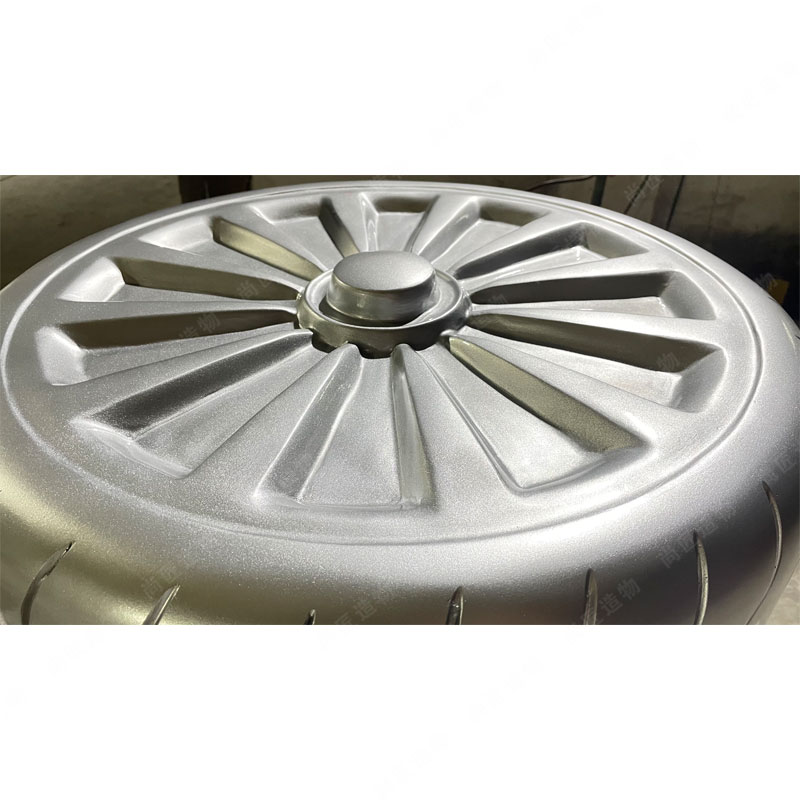
Indoor-Outdoor Versatility in Decorative Statuary
Fiberglass statues excel in bridging interior and exterior design challenges, offering adaptability rarely matched by traditional materials. Their weather-resistant composition withstands UV exposure, humidity, and temperature fluctuations, making them ideal for gardens, patios, or poolside installations. At the same time, their refined finishes and lightweight structure—often 70% lighter than stone or bronze—allow seamless integration into indoor spaces like foyers, sunrooms, or living areas. This dual functionality enables designers to maintain aesthetic continuity between connected environments, such as transitioning a Realistic sculpture from a garden pathway to an adjacent atrium without compromising style or structural integrity.
Unlike porous concrete or fragile ceramics, fiberglass retains intricate details in both climates, resisting cracks and fading. Ronglin Garden’s hybrid concrete-fiberglass technique further enhances this versatility, combining textured earthy bases with polished figurative elements. The material’s moldability supports diverse themes—from abstract modern forms to classical figures—ensuring coherence in eclectic design schemes. By eliminating concerns about weight restrictions or seasonal storage, these statues simplify long-term spatial planning while reducing environmental strain through extended product lifespans.
Ronglin Garden’s Sustainable Design Philosophy
Ronglin Garden’s approach to design prioritizes environmental stewardship without compromising aesthetic integrity. By combining fiberglass with recycled concrete aggregates, their statues achieve structural resilience while minimizing material waste—a core tenet of their eco-conscious ethos. The production process employs low-energy curing methods and water-based pigments, reducing carbon footprints compared to traditional casting techniques. This philosophy extends to longevity: unlike conventional materials prone to weathering, fiberglass-concrete hybrids resist cracking and UV degradation, ensuring decades of use with minimal maintenance. Such durability aligns with sustainable practices by reducing replacement cycles and landfill contributions. The studio also integrates kinetic sculpture principles into select designs, where balanced forms interact naturally with wind or water currents, merging functionality with artistic motion. By sourcing locally available raw materials and collaborating with landscape architects, Ronglin Garden ensures their creations harmonize with regional ecosystems, fostering spaces that feel both intentional and organically rooted. This commitment to sustainability reflects a broader vision—where decorative art serves as a bridge between human creativity and ecological responsibility.
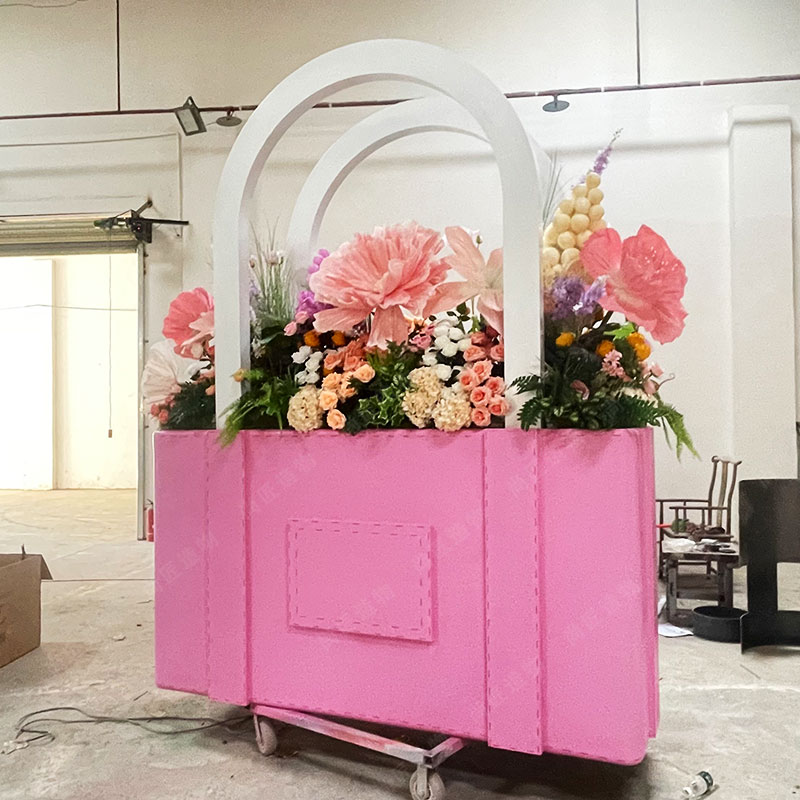
Serenity Through Fiberglass-Enhanced Landscapes
Fiberglass statues introduce an understated harmony to outdoor spaces by merging natural inspiration with engineered resilience. Unlike traditional materials that may dominate a landscape, the lightweight nature of fiberglass allows for slender, flowing forms that mimic organic shapes—think curved botanical motifs or abstract figures resembling wind-swept patterns. These statues interact subtly with their surroundings, casting delicate shadows or reflecting sunlight without overwhelming the environment. Their durability ensures they remain undisturbed by seasonal changes, maintaining their aesthetic integrity even in high-moisture gardens or sun-exposed patios.
For water features, fiberglass sculptures excel as focal points, their surfaces resisting corrosion from splashes or humidity. Designers often position them near ponds or pathways to create visual anchors that guide the eye while preserving a sense of calm. The material’s adaptability also supports custom textures, from matte finishes that blend with stone elements to polished coatings that mirror water’s reflective qualities. By integrating these statues into landscapes, spaces gain a meditative quality—a balance of artistry and restraint that invites contemplation without demanding attention. This approach aligns with modern preferences for low-maintenance, enduring designs that evolve gracefully with time.
Affordable Luxury in Fiberglass Garden Decor
Fiberglass statues have redefined accessibility in high-end garden design, offering premium aesthetics without the prohibitive costs of traditional materials like bronze or carved stone. Unlike heavier alternatives, fiberglass’s manufacturing process allows for intricate detailing at a fraction of the price, making sophisticated artistry attainable for residential and commercial projects alike. For instance, Ronglin Garden’s concrete-fiberglass hybrids replicate the textured elegance of aged stone or weathered metal, yet their lightweight composition reduces shipping and installation expenses by up to 40%. This cost efficiency extends to maintenance, as fiberglass resists cracking, fading, and corrosion—eliminating the need for frequent repairs.
Moreover, the material’s adaptability supports customizable finishes, from matte earth tones to metallic patinas, ensuring seamless integration with diverse design themes. While marble or granite may convey opulence, their fragility and weight limit creative flexibility. Fiberglass, however, balances affordability with structural resilience, enabling bold installations like suspended garden sculptures or tiered water features that traditional materials cannot safely support. By prioritizing both economic and artistic value, fiberglass decor democratizes luxury, proving that refined outdoor spaces need not compromise on durability or budget. This approach aligns with Ronglin Garden’s commitment to sustainable innovation, where longevity and accessibility coexist as pillars of modern landscape design.
Conclusion
Lightweight durable fiberglass statues represent a harmonious intersection of innovation and artistry, offering practical solutions for modern design challenges. By combining the strength of fiberglass with refined craftsmanship, these statues transcend traditional decor limitations, enabling seamless integration into both indoor and outdoor environments. Their resistance to weathering, minimal maintenance requirements, and adaptability to diverse aesthetics make them a strategic choice for enhancing spaces without compromising functionality.
Ronglin Garden’s approach to blending concrete textures with fiberglass durability exemplifies how contemporary materials can honor timeless design principles. As eco-consciousness grows, the longevity and recyclability of fiberglass further align with sustainable landscaping trends, ensuring these pieces remain relevant across generations. Whether used to anchor a garden’s focal point or add subtle elegance to interior spaces, fiberglass statues stand as testaments to how thoughtful material choices can elevate design narratives while enduring the test of time.
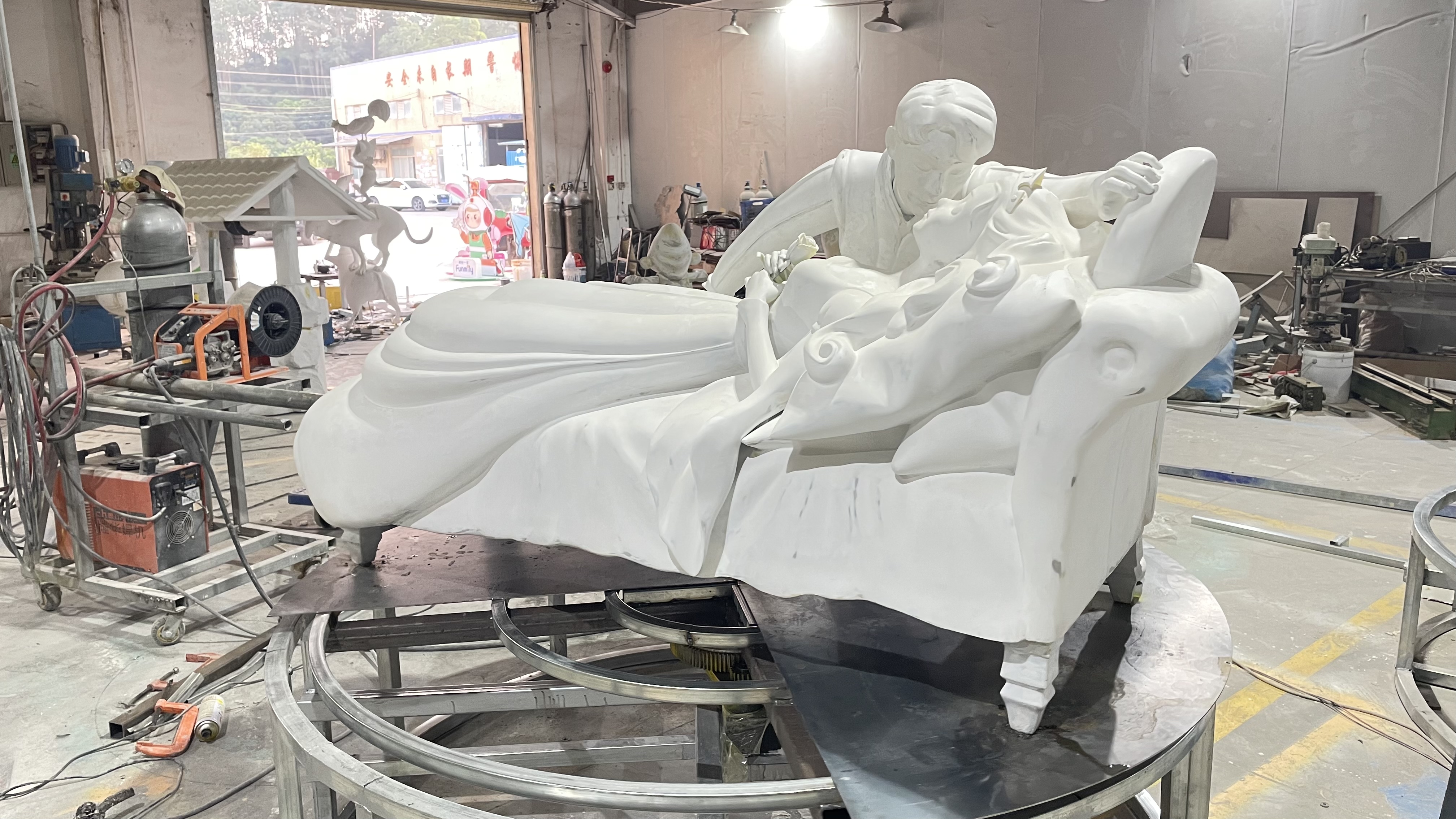
FAQs
What makes fiberglass statues more durable than traditional materials?
Fiberglass combines resin and glass fibers, creating a material resistant to cracking, fading, and moisture. Unlike stone or wood, it maintains structural integrity in fluctuating temperatures, making it ideal for long-term indoor and outdoor use.
Are lightweight fiberglass statues stable in windy conditions?
Yes. While significantly lighter than concrete or metal, fiberglass statues are often weighted at the base or anchored during installation. This ensures stability without compromising their portability or ease of repositioning.
How do concrete-fiberglass blends enhance aesthetic appeal?
The fusion adds textured, stone-like finishes to fiberglass’s smooth surfaces. This hybrid approach allows intricate detailing—from weathered patinas to polished edges—while retaining the material’s resistance to erosion and wear.
Can these statues be customized for specific design themes?
Absolutely. Fiberglass accepts paints, stains, and coatings exceptionally well, enabling tailored color schemes. Manufacturers like Ronglin Garden often offer modular designs, adapting sculptures to minimalist, classical, or contemporary settings.
Is fiberglass environmentally friendly compared to plastic decor?
Fiberglass has a longer lifespan, reducing replacement frequency. Many producers now use recycled glass fibers and low-VOC resins, aligning with sustainable landscaping practices by minimizing waste and chemical runoff.
Do fiberglass statues require special maintenance?
Routine cleaning with mild soap and water suffices. Unlike metals, they don’t rust, and UV-resistant coatings prevent sun damage. Annual inspections for chips or cracks ensure lasting vibrancy.
Why choose fiberglass over bronze for garden sculptures?
Fiberglass replicates bronze’s luster at a fraction of the weight and cost. It also avoids bronze’s susceptibility to verdigris, maintaining its appearance without intensive polishing.
 ch
ch English
English






